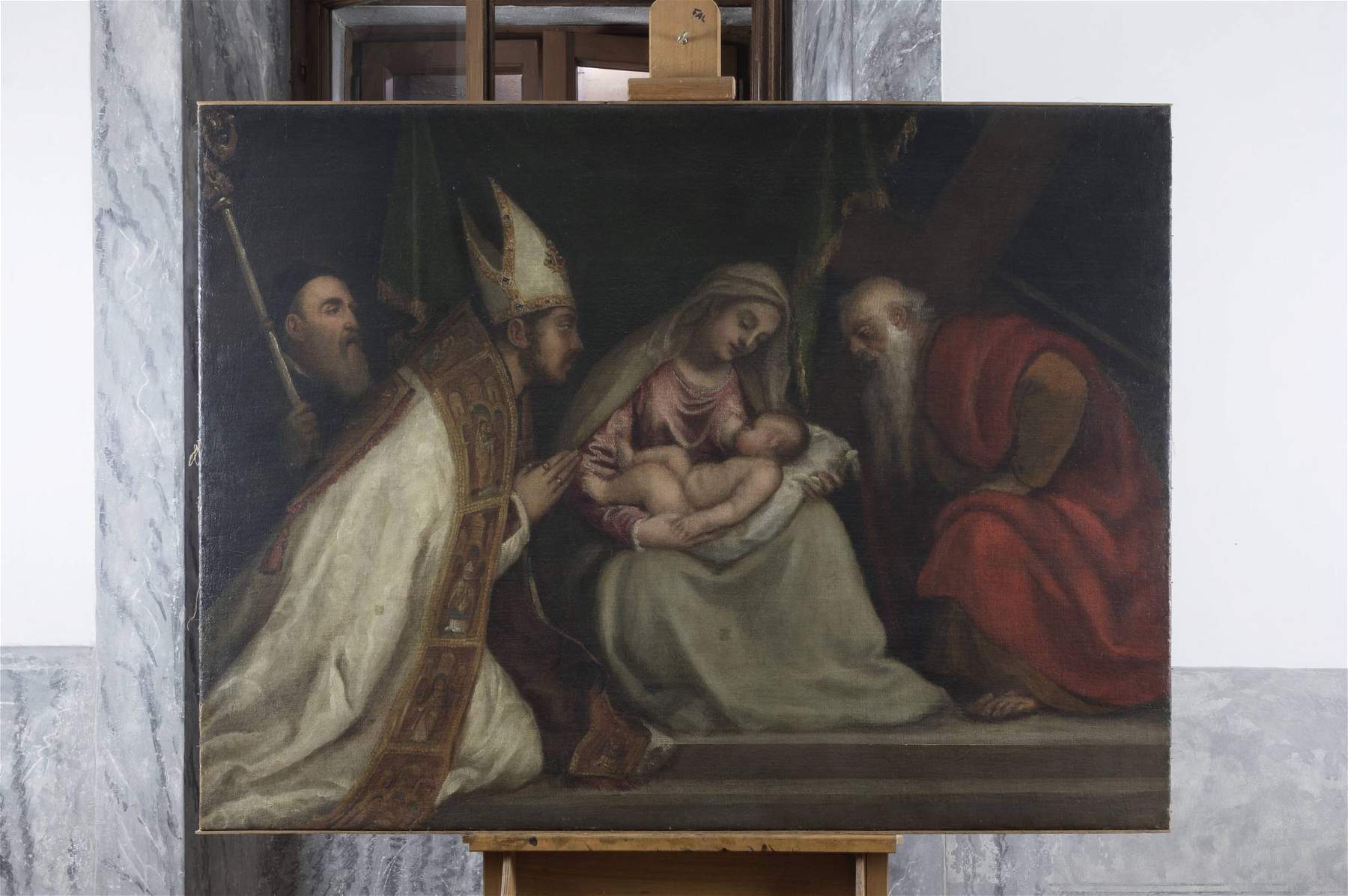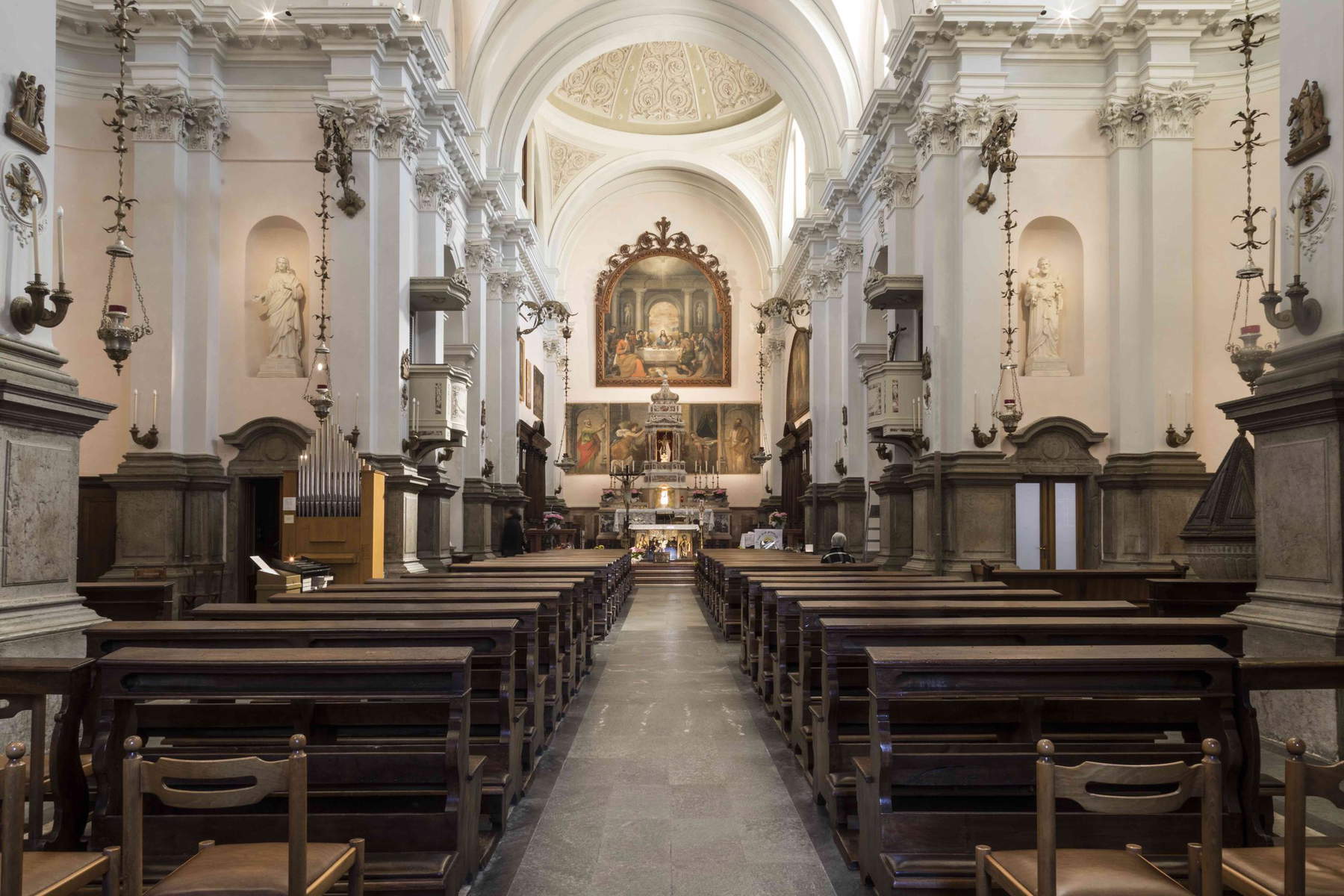On the occasion of the 20th anniversary of the Titian and Cadore Study Center Foundation, the study center on Titian Vecellio based in the great Venetian artist’s hometown of Pieve di Cadore, the restoration of the altarpiece made by Titian for the Archdeacon church in Pieve di Cadore, in the Belluno Dolomites, gets under way. This is an important opportunity for the recovery and study of a work that is highly significant in Titian’s biography and also holds a self-portrait of the master. The canvas, which has faced as many as two thefts over the centuries, will shine again for the summer, including with a new lighting system, thanks to the Titian and Cadore Foundation and the Galvalux company of Pieve di Cadore.
Titian, perhaps with the help of his workshop, painted the work between 1559 and 1568 for the Vecellio family’s aristocratic chapel in the parish church of his hometown, and he had also wanted to include a self-portrait of himself in it, dependent on the famous one now in the Prado, as an eternal reminder of his connection with his land. Since then for almost 460 years, even defying the ill fortune of two thefts, the Madonna and Child between Saints Titian, Andrew and an acolyte has remained in the small town in Veneto and mostly in the sacred setting for which it was intended: the church of Santa Maria Nascente (so re-consecrated after the 18th-century destruction of the original Gothic building) seat of the Archdeaconry of Cadore, a must-see pilgrimage site for scholars and lovers of the extraordinary Venetian painter.
As of this summer, Titian’s altarpiece can be admired in the splendor of its original colors and Titian light, thanks to the restoration promoted and financed by the Titian and Cadore Foundation on the occasion of its 20th anniversary together with the Galvalux firm of Pieve di Cadore at the behest of the De Polo family and all its members. The project is being carried out in agreement with the Soprintendenza Archeologia, Belle Arti e Paesaggio for the metropolitan area of Venice and the provinces of Βelluno, Padua and Treviso and the Archdeaconry of Cadore with Monsignor Diego Soravia.

 The archdeaconry
The archdeaconryAs of Thursday, May 4, in fact, the precious canvas, which was suffering from the loss of thickness of the original pigment and was now in mediocre conservation condition, has been transferred to a specially set up laboratory in the nearby House of Titian the Orator (the painter’s cousin) headquarters of the Foundation. Here all the non-invasive diagnostic analyses will be carried out with the most up-to-date technologies to obtain for the first time fundamental information for the study of the Vecellian work, and then the cleaning and conservative restoration of the altarpiece entrusted to the expert hands of Francesca Faleschini, who is also responsible for the recent restoration of Titian’sAnnunciation in Treviso.
According to the timetable, the altarpiece, also enhanced by a new lighting system, will be relocated by the end of June in the Archdeaconry church in Pieve di Cadore )which in recent years has itself undergone technological upgrades and restoration, including the ongoing work on the “Bazzani” organ) with the inauguration and celebrations due for this gift to the territory and culture.
The Pieve di Cadore altarpiece is also a work of undoubted significance from the biographical and personal point of view of the Maestro, considered almost a family picture. Indeed, tradition and some of the earliest sources claim that in the Vecellian painting the face of the bearded saint depicts Titian’s brother Francesco, while in the bishop one tends to recognize the features of his son Pomponio or nephew Marco. a continuer of the activity of the Venice workshop; finally, in the image of the Madonna the figure of Lavinia, his daughter who died after January 1574 and before August 27, 1576.
It cannot be said at the moment, given the passage of time and the adventurous fortunes suffered by the work, how effective these identifications are, but the emotional and factual involvement of the Vecellio clan in its conservation is evident and well known.
The restoration of the Pieve di Cadore altarpiece will mark another fundamental step in the knowledge of the great artist’s pictorial production, and the results achieved, the research related to the work and its context, will be the focus of a scientific volume published next fall by the Foundation, edited by Stefania Mason chair of its scientific committee, with essays by Don Paolo Barbisan, Elisa Buonaiuti, Davide Bussolari, Alessandra Cusinato, Enrico Maria Dal Pozzolo, Francesca Faleschini, and Nicole de Manincor.
 |
| The altarpiece that Titian painted for his Pieve di Cadore will be restored. |
Warning: the translation into English of the original Italian article was created using automatic tools. We undertake to review all articles, but we do not guarantee the total absence of inaccuracies in the translation due to the program. You can find the original by clicking on the ITA button. If you find any mistake,please contact us.